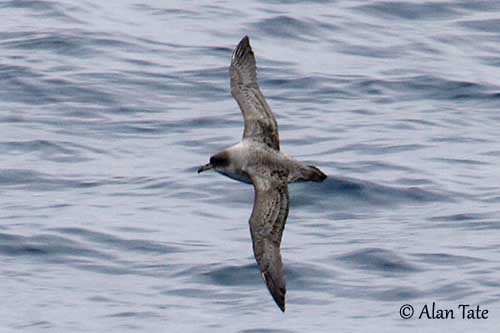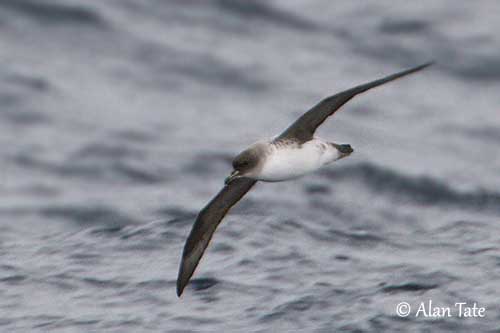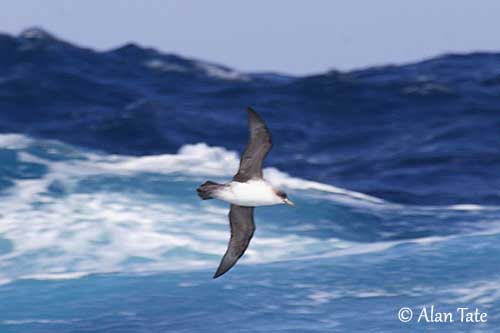
Fr: Puffin gris
Ang: Grey Petrel
All: Grausturmvogel
Esp: Pardela Gris
Ita: Procellaria grigia
Nd: Bruine Stormvogel
Sd: gråpetrell
Photographers:
Alan & Ann Tate
AA Bird Photography
Text by Nicole Bouglouan
Sources:
HANDBOOK OF THE BIRDS OF THE WORLD vol 1 by Josep del Hoyo-Andrew Elliot-Jordi Sargatal - Lynx Edicions - ISBN: 8487334105
A Complete Guide to Antarctic Wildlife by Hadoram Shirihai and Illustrated by Brett Jarrett - Edited by Guy M. Kirwan - ALUL.A Press Oy, Finland - ISBN 9519894705
Department of Conservation
Are grey petrels returning to Campbell Island? Survey and census 14 years after rodent eradication
Birds in Danger – Australia’s threatened birds
Species Conservation Summary – Grey Petrel
New Zealand birds and birding (Narena Olliver)
Wikipedia, the free encyclopaedia
Page family Procellariidae
Summary cards
Grey Petrel
Procellaria cinerea
Procellariiformes Order – Procellariidae Family
INTRODUCTION:
The Grey Petrel has circumpolar distribution and occurs on several subantarctic islands during the breeding season. Like other petrels, it breeds in colonies and nests in burrows. It is marine and pelagic, and returns to islands only for breeding.
It forages in the open sea by diving, and can reach depths of 10 metres. It uses its wings for swimming underwater. It is attracted by fishing boats where it is threatened by baited fish hooks.
Mammal predators on breeding islands are responsible for declines, and this species is currently listed as Near Threatened.
DESCRIPTION OF THE BIRD:
Biometrics:
Length: 48-50 cm
Wingspan: 115-130 cm
Weight: 760-1520 g
The adult is a heavy-bodied seabird with narrow, long wings and ashy-grey plumage above and white below.
The head is dark grey to brownish-grey, but nape and upperparts are paler, slightly darker on the upperwing, and even more on the tail. The upperparts show slightly scaled pattern at close range.
On the underparts, the underwing is dark grey to brownish-grey, including the axillaries. The wedge-shaped tail is grey. Rest of underparts is whitish, but thighs and undertail-coverts may show some brownish-grey tinge.
The head may appear hooded sometimes, according to the distance and the light.
The stout bill varies from greenish to yellowish or grey, but it is mostly ivory with blackish culmen. The eyes are dark brown. Legs and webbed feet are fleshy-grey, darker outside and with yellowish webs.
Male and female have similar plumage, but the male is slightly larger overall.
The juvenile resembles adults.

RANGE:
The Grey Petrel is found in temperate to subantarctic waters in S oceans. It breeds on several islands including Tristan da Cunha, Gough, Marion, Crozet and Kerguelen Islands, and E through S Indian Ocean to Campbell Island and Antipodes Islands.
HABITAT:
The Grey Petrel breeds on steep slopes with vegetation and in tussock grasslands (Poa Foliosa).
Outside the breeding season, it is marine and pelagic and usually occurs in cold waters. They reach the tropical zone by following the cold Humboldt and Benguela Currents. They reach the waters off W South America up to Peru.
CALLS AND SONGS: SOUNDS BY XENO-CANTO
The Grey Petrel is silent at sea, but it is more vocal at night at colonies. However, its repertoire in more reduced than other petrels.
Some melodious moans are uttered during the pre-laying period “aaargh-hoo-errhooer…” with both ascending and descending notes. Rattling calls can be heard too.
The alarm call is a “bleat” also used in territorial disputes.
BEHAVIOUR IN THE WILD:
The Grey Petrel feeds on cephalopods (Teuthoidea), fish and crustaceans, usually caught by surface-seizing and pursuit-plunging. It scavenges around fishing boats for offal and may associate with small cetaceans which lead the preys close to the surface.
The Grey Petrel feeds alone or in groups, sometimes in large mixed-species flocks. This species performs dives directly into the water from heights of up to 8-10 metres. It swims underwater with the wings and can remain below the surface for several minutes.

The Grey Petrel is monogamous and pairs have long-term pair-bonds. They are nocturnal at colonies to avoid predation, and they start to visit them after dark. However, they occasionally fly over the breeding islands and land during the day. They usually remain in their burrows. But at night, they leave the island before dawn.
They utter loud repeated quacking calls after dark and before dawn. These calls are used to attract females to the nest-site. During the bonding between mates inside the burrow, they give a low moan barely audible.
The courtship displays usually take place inside the burrow and consist largely of “Billing” with oil dribbling along the bill, and mutual preening. They are colonial breeders.
The Grey Petrel disperses over the Southern Ocean after breeding, and it reaches the subtropical zones up to waters off Peru by following cold currents.
This species is uncommon in SW Atlantic, occasional around South Georgia and rare in the Falklands.
The Grey Petrel has direct and effortless flight with few slow and shallow wingbeats. Like the Diomedeidae, it performs long glides and arcs in strong winds. It usually flies just above the water, although it can soar much higher.

REPRODUCTION OF THIS SPECIES:
The breeding season starts in February/March and the laying takes place in March/April, 45 days after the birds returned to the colonies.
The Grey Petrel establishes the colonies on steep, well-vegetated and well-drained slopes. It nests in self-excavated burrows of 1-3 metres long.
The female lays a single white egg, and both adults incubate during 50-60 days in five shifts. At hatching, the chick has grey down. It is brooded for only 2-3 days and fed by regurgitation by both parents. It fledges about 100-120 days after hatching, between October and December.
The Brown Skua and the Weka are the usual predators on some islands.
PROTECTION / THREATS / STATUS:
The breeding success depends on mammal predators on breeding islands, because cats and rats are still present on some islands.
At Kerguelen, the Grey Petrel is affected by predation and competition for nest-sites with the Black-faced Sheathbill and the White-headed Petrel.
Both Antipodes and Campbell Islands are legally protected as sanctuaries with restricted access. The Grey Petrel is recognized at high risk from commercial fishing operations.
The total population is estimated at 400,000 individuals, but this figure could be incorrect. Another tally estimates at least 80,000 pairs worldwide, but this is probably a rough estimate.
The Grey Petrel is currently listed as Near Threatened.
